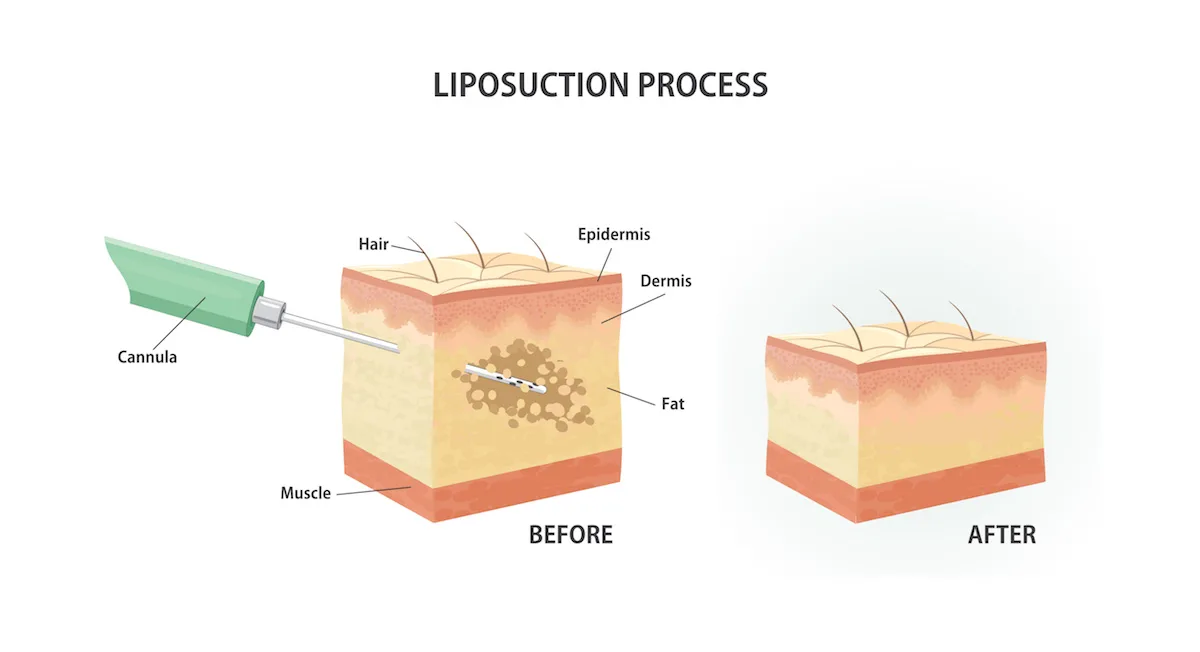Scars After Liposuction: What to Expect and How We Minimize Them
At Evita Clinic, one of the most common concerns patients express during liposuction consultations is: “Will I have scars?”
It’s an understandable question. Everyone wants to see the benefits of liposuction—improved shape, slimmer lines, more confidence—but not everyone wants those results to come with visible reminders. The good news? While some scarring is inevitable, much can be done to minimize it—and we’ll explain exactly how.

Why Do Scars Form After Liposuction?
To remove fat, a long, thin tube called a cannula must be inserted under the skin. This is done through small incisions, typically 0.5 to 1 cm in size. Though small, these openings can leave scars depending on how the skin heals.
When the cannula is inserted, it must be moved back and forth hundreds of times to suction fat from different directions. This repetitive motion causes friction at the incision site.
When the deeper layers of the skin (the dermis) are irritated or damaged, the body produces extra collagen to heal the area. While collagen is necessary, excessive production can lead to raised, thick, or pigmented scars.

The Biggest Factor? Your Skin.
Not everyone scars the same way. In fact, the most important factor in scar formation isn’t the surgeon or the technique—it’s you.
Scar appearance is heavily influenced by:
- Genetic predisposition
- Skin type and tone
- Racial background
- Tendency to form keloids or hypertrophic scars
Some individuals develop faint, flat lines. Others may be prone to thicker, more visible scars even from very small wounds.
That said, technique and post-operative care still matter—a lot.

How We Reduce Scarring at Evita Clinic
We take multiple steps to minimize scarring from the very beginning:
1. Strategic Incision Placement
We place incisions in discreet, natural folds of the body whenever possible:
- In the belly button
- Along the panty line or inguinal crease
- Under the buttock fold
- Behind the elbow or under the arm
These areas are naturally hidden by underwear or skin folds, making scars less noticeable.
2. Skin Protection During Surgery
Because the cannula moves through the same incision repeatedly, there’s a risk of friction that can worsen scarring. To prevent this, Evita Clinic uses a special tool called a Skin Protector.
This protective sleeve surrounds the incision, shielding the skin from repeated irritation and reducing trauma to the dermis.
3. Post-Surgery Scar Management
Once stitches are removed (usually 7–10 days after surgery), we apply Steri-Strips to the incision area and recommend patients keep them in place for at least 1 month.
This helps reduce skin tension and keeps the scar flat as it heals.
After the Steri-Strip period, we prescribe a medical-grade scar ointment, which should be used daily for several months. This topical treatment helps fade discoloration, soften scar tissue, and promote smooth healing.
4. Optional Fraxel Laser Therapy
In cases where scars are thick or irregular, we may recommend Fraxel laser treatment. This advanced therapy uses microscopic laser channels to break down dense scar tissue and stimulate the growth of healthy new collagen.
It’s usually performed every 3–4 weeks and may require 3–4 sessions for optimal results.
Common Incision Sites by Area
We’ve designed our approach to keep incisions as minimal and hidden as possible. Here’s where you can expect them:
- Abdomen: Belly button and groin crease
- Flanks / Love Handles: Above the buttock fold or near bra line
- Thighs: Inner groin and under the buttock fold
- Arms: Underarm area and inner elbow
These locations allow for a full range of fat removal while placing scars where they are least likely to be seen.



Will My Scars Disappear Completely?
No scar can be erased completely—but with expert placement, skin protection during surgery, and dedicated scar care after, they can fade into barely noticeable lines.
Many of our patients find that, over time, the tiny scars are hard to locate even when looking for them.
Trust Evita Clinic for a Thoughtful, Scar-Minimizing Approach
We don’t treat scarring as an afterthought—it’s built into how we plan and perform your surgery from day one.
If you have concerns about liposuction scars or want to learn more about our scar management program, contact us today. We’re here to guide you every step of the way—before, during, and long after your procedure.

